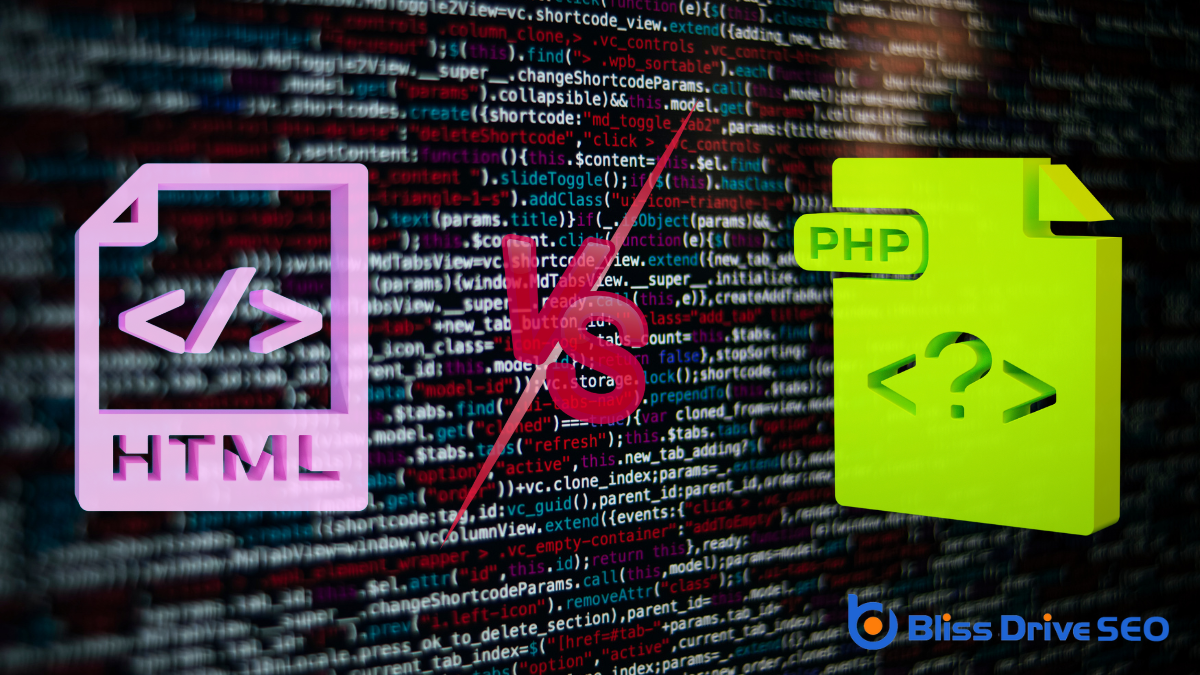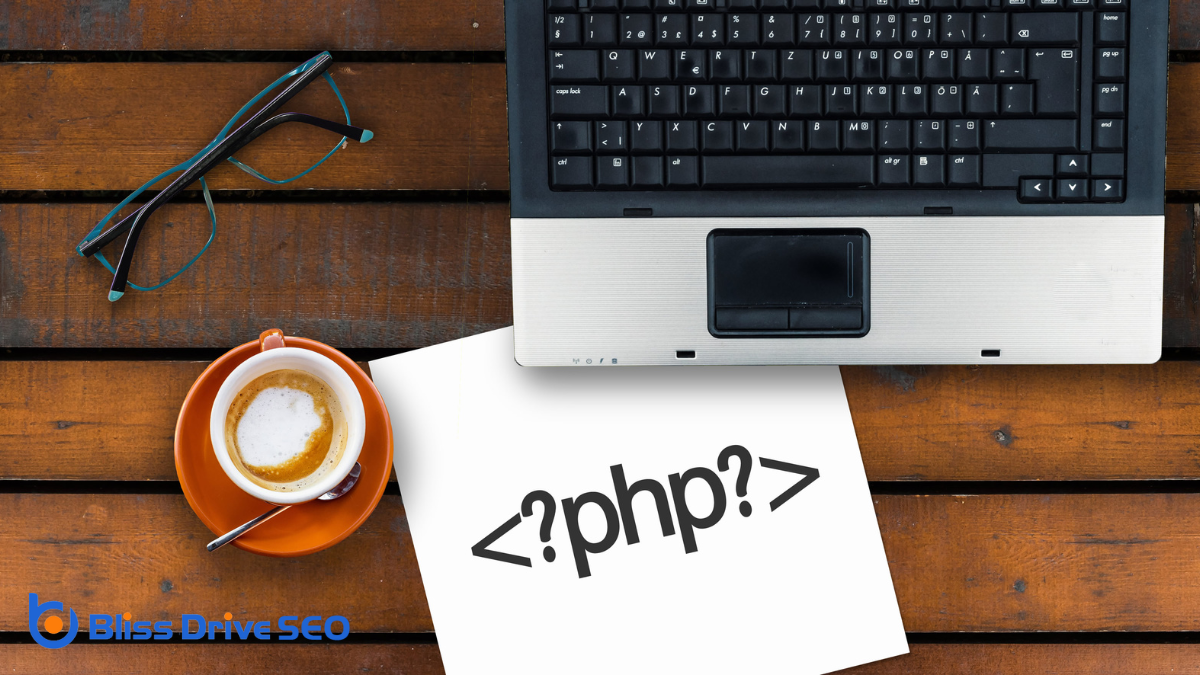Learn More About Us

When you're diving into web development, understanding the roles of PHP and HTML is essential. You've probably used HTML to structure content, creating those familiar headings and paragraphs. But have you ever wondered how to add interactivity and enhance user experience? That's where PHP steps in, transforming static pages into dynamic and responsive sites. While HTML sets the stage, PHP adds the action, making them a powerful duo. So, how exactly do these languages work together, and why does it matter for your projects? Let's uncover the synergy between PHP and HTML.
HTML, or Hypertext Markup Language, is the backbone of any webpage you encounter on the internet. It's essential for structuring content, allowing browsers to interpret and display text, images, and other elements correctly.
You might think of HTML as the building blocks for any online content, defining headers, paragraphs, links, and lists. When you view a webpage, what you see visually is a result of HTML guiding the browser on how to present the information.
To start with HTML, you'll write code inside tags, which are enclosed within angle brackets. These tags tell the browser how to interpret the text or media contained within them. For example, the '
' tag denotes a header, while the '
' tag specifies a paragraph.Understanding tags is vital, as they're the foundation of HTML's functionality. You'll often pair tags with attributes to provide additional details. Attributes appear within the opening tag and can define properties like the text color or the destination of a hyperlink.

A robust tool in web development, PHP (Hypertext Preprocessor) powers countless websites with dynamic content capabilities.
You're probably wondering what makes PHP so necessary. Well, it's a server-side scripting language, which means it runs on the server and generates HTML for the browser to display. Unlike static HTML, PHP can interact with databases, handle forms, and even manage user sessions, making it incredibly versatile.
Here are some key fundamentals you should know about PHP:
When you're comparing PHP and HTML, it's important to understand their distinct roles.
PHP handles dynamic content by running scripts on the server, while HTML structures static content directly in the browser.
You'll often use PHP to create interactive features, whereas HTML sets the foundational layout of your web pages.
Understanding the essence of web development requires distinguishing between PHP and HTML, as each serves distinct functions and purposes. HTML, or Hypertext Markup Language, is the backbone of web pages, structuring content with elements like headings, paragraphs, and links. It defines the layout and presentation of your website.
PHP, on the other hand, is a server-side scripting language designed to manage dynamic content, databases, and session tracking. It can create interactive features and handle data processing on your website.
Let's explore the key differences between them:
Dynamic content and static content represent two fundamental aspects of web development, each handled differently by PHP and HTML.
Static content, which HTML excels at, remains unchanged until you manually update it. Think of it like a printed newspaper; once published, the information stays the same. HTML is perfect for displaying this kind of content—text, images, and links that don't need to change based on user interactionAny action taken by a user on social media, such as likes, comments, shares, or retweets. or external factors.
On the other hand, dynamic content is where PHP shines, adapts, and responds to user input or other data sources. Imagine a personalized news feed that updates based on your interests or a shopping cart that reflects the latest additions you've made.
PHP, being a server-side scripting language, generates content on the fly, making it possible for web pages to offerThe specific product or service being promoted by affiliates. personalized, interactive experiences.
You'll find that using PHP for dynamic content means your web pages can interact with databases, retrieve user-specific information, and adjust the display accordingly. This flexibility allows for a richer user experience compared to static HTML.
When you integrate PHP with HTML, you can generate dynamic content that changes based on user interactions or data updates.
PHP's server-side processing power allows you to perform complex operations and deliver results directly to the user's browser.
This combination enhances user interactivity, making your web pages more responsive and engaging.
PHP greatly elevates HTML's capabilities by enabling dynamic content generation. When you combine PHP with HTML, you open the door to creating web pages that can change based on user interaction, time, or other variables.
Instead of static content, where the page looks the same for everyone, PHP allows each visitor's experience to be unique and tailored. Here's how PHP enhances your HTML:
While HTML is essential for structuring web pages, it's PHP that truly harnesses the power of server-side processing to enhance your site. When you use PHP, you're not just adding static content to your pages; you're dynamically generating content based on data from a server. This means PHP can access databases, read files, and execute complex calculations, all before sending a single byte to the client's browser.
With server-side processing, PHP allows you to perform tasks like user authentication and data encryption securely. Since PHP runs on the server, sensitive operations remain hidden from users, providing an extra layer of security. You can also automate tasks such as emailing forms or storing user information, making your website more efficient and responsive.
Moreover, PHP enhances performance by reducing the client's workload. Instead of relying heavily on the user's device to process data, PHP does the heavy lifting server-side, allowing even resource-constrained devices to access your site smoothly.
Building on the robust server-side processing power discussed earlier, you can considerably enhance user interactivity by integrating PHP with HTML.
PHP allows you to create dynamic content that responds to users' actions, making your web pages more engaging. Here's how PHP can elevate user experience on your site:

When diving into the digital domain, PHP's versatility shines through in various practical applications. It's a powerful tool for crafting dynamic web pages. With PHP, you can easily manage data collection forms, such as login systems or contact forms, allowing you to handle and validate user input efficiently.
If you're building an e-commerce site, PHP helps manage product catalogs and user shopping carts, ensuring your customers have a smooth shopping experience.
PHP is also instrumental in content management systems (CMS) like WordPress, Joomla, or Drupal. These platforms rely on PHP to store and retrieve content, making it easy for you to update your website without delving into the code every time.
If you're working with databases, PHP pairs seamlessly with MySQL, allowing you to fetch and store data dynamically. This is particularly useful for websites that require constant updates, like news portals or blogs.
Moreover, PHP excels in session management, which is essential for applications that require user authentication. You can maintain user state across different pages effortlessly.
Whether you're developing forums, social media platforms, or custom web applications, PHP provides a robust framework to meet varied needs efficiently.
PHP and HTML work together seamlessly to create dynamic and interactive web pages. By integrating PHP into your HTML, you can access databases, manage sessions, and handle forms with ease. PHP processes data on the server, while HTML displays it to the user. This collaboration allows you to build powerful web applications.
To integrate PHP and HTML effectively, follow these steps:
While PHP and HTML work together seamlessly, understanding when to use each is key to web development. HTML is your go-to for structuring web pages. It's like the skeleton of your site, defining elements like headings, paragraphs, and images. When you need to lay out content in a straightforward, static way, HTML is your best friend. It sets the stage for everything users see and interact with on the front end.
On the other hand, PHP comes into play when you need dynamic content or server-side processing. If your project requires interacting with databases, handling forms, or performing complex calculations, PHP is crucial. It runs on the server, fetching data and generating HTML before it reaches the user's browser. This means you can create personalized experiences or update content without needing to reload the entire page.
Choosing between PHP and HTML isn't about picking one over the other; it's about leveraging their strengths. Use HTML for static content and layout and PHP for dynamic interactions and data management.
A well-balanced approach guarantees your web pages are both functional and efficient, meeting your users' needs effectively.
As you immerse yourself in web development, you'll discover that HTML and PHP each have unique roles. HTML structures your content, making it visible and organized on browsers. PHP, on the other hand, brings your site to life with dynamic features, processing user inputs, and interacting with databases. Together, they create powerful and interactive websites. By understanding when and how to use each, you can craft efficient, responsive web experiences that cater to your audience's needs.
